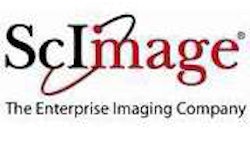
What is a universal viewer? A universal viewer is a distributed, scalable viewing technology capable of displaying any clinical content from any source, including the relevant viewing tools needed to interact with the displayed content.
There are common attributes that define a universal viewer. This article explores the "universality" of these attributes by focusing on the multi "-ology" nature of content-generating departments, the universal nature of the end users, and the operating system diversity.
Planning your selection
The first step is to establish a solid foundation of centralized data ownership and standards-based interoperability. From a functionality standpoint, consider the following questions as you plan your universal viewer product selection:
- Will the viewer be used for distributed image display?
- Will the viewer be used for reports and unstructured clinical content?
- Will the viewer be used on mobile devices as well as workstations?
- Will the primary users be specialists, generalists, or patients?
- Is the content stored in various silos across your enterprise?
"Universal content" is the ability to display any content from any "-ology" source. The most common image-generating departments are radiology and cardiology. Healthcare delivery organizations may have dozens of other image-producing departments such as ophthalmology, dermatology, nephrology, oncology, endoscopy, and gynecology. Facilities also have many additional systems that generate and capture unstructured content such as PDF reports, JPEG images, and TIFF faxes that could also be displayed and supported by the universal viewer.
The term "universal" in this context extends well beyond radiology DICOM images. In medical systems, as in other systems, content format should be supported by the viewer. For example, to view a Microsoft PowerPoint file, you need a Microsoft PowerPoint viewer. The solution to this problem is not to force all content-producing systems to conform to a singular format supported by the viewer, as is the case with DICOM wrapping (a technique used to facilitate viewing of non-DICOM object data inside a DICOM viewer).
Rather, the solution is to have a content-agnostic central archive with an integrated universal viewer capable of viewing all content types. According to recent Frost & Sullivan analysis, a third-generation vendor-neutral archive (VNA) provides the necessary content management with support for DICOM and non-DICOM images.
"Universal audience" is the ease of use and appeal of the viewer to the largest possible audience. Traditionally, the target audience of a universal viewer is the community of referring physicians. As such, their satisfaction will solidify support for your enterprise image-distribution strategy. The appeal of a universal viewer is in its ability for referring physicians, as well as diagnosticians, nurses, specialists, and patients alike, to use the viewer with ease.
The purpose of a universal viewer is not to replace specialty workstations, such as a high-end 3D rendering workstation or cardiac chamber segmentation software. Rather, the intent is to deliver viewing for a wide variety of content to a broad audience. This could be achieved by keeping features to a minimum, including limiting functionality to the most basic image viewing tools such as scrolling and zooming.
Expanding features of the viewer should not compromise its ease of use. Some vendors have developed a "smart viewer" that will load varying toolsets based on user skill profiles. In other words, basic users have a basic toolset, while advanced users have an advanced toolset specific to their functions and the context in which the viewer was launched. The viewer should be simple and intuitive in order to be used by a wide-ranging audience.
"Operating system universal" is the ability to run the viewer on any operating system (OS). The Windows operating system continues to dominate hospital environments, with Apple systems running a close second. Windows 8 introduced another level of complexity with its unique user interface changes. Where should healthcare organization draw the line? Should Linux or its many variants be considered? Should Chrome OS be considered?
IT departments are deploying and supporting universal viewers on thousands, if not tens of thousands, of workstations. Today, the best method of delivering an OS-agnostic viewer is through a Web application that is totally independent from the operating system and the many available Web browsers.
The term "zero-footprint" is often used to refer to OS-agnostic applications. As a longtime industry observer, I find the term lacking in specificity as it relates healthcare. More specifically, zero-footprint applications do not require end users to install software. Just as important, a zero-footprint viewer should not leave any patient data behind when the viewer is closed. This includes all protected health information (PHI) that may inadvertently be left in temporary folders and browser history.
"Device universal" is the ability to use the universal viewer on any device. Many physicians have the expectation of working in a "bring your own device" (BYOD) environment. Hospital IT leaders are increasingly challenged by users who bring their phones and tablets and expect IT departments to provide ubiquitous access to systems and data on these devices. The most common tablet device used in healthcare is the Apple iPad, followed by a variety of Android and Windows tablets. The most commonly used smartphones are iPhones and Androids, followed by Microsoft Windows phones as a distant third.
The universal viewer should support mobile devices across device type and size. As you select a universal viewer for your enterprise, look for tablet or smartphone-specific optimization platforms. For example, determine if the application will respond to multitouch operations such as pinch zoom, or if it requires the user to select the zoom function from a toolbar that mimics an action design for a mouse click-and-drag operation built for a workstation.
Choosing a universal viewer for your enterprise requires a technical deep dive into features and capabilities, deployment models and supportability, and image manipulation and rendering technologies. Rapid development of new universal viewing technologies and interdependencies of systems, networks, workflows, and devices has led to a price-competitive environment with many options.
A savvy customer understands that the value of the universal viewer does not lie in the technology itself or in the immediate needs of the enterprise, as these factors will likely change over time. The true value of a universal viewer lies in the data ownership and interoperability gained by deploying a VNA working in concert with the viewing technology.
Imad Nijim is director of professional services, healthcare, for Perceptive Software. He has an extensive background in healthcare IT systems with expertise in oncology, cardiology, radiology, and enterprise clinical content management solutions. Prior to joining Perceptive, he held senior leadership positions with Acuo Technologies, ScImage, Emageon, and Siemens. He holds a bachelor's degree in mathematics and a Master of Business Administration degree in healthcare management.
The comments and observations expressed herein are those of the author and do not necessarily reflect the opinions of AuntMinnie.com.



















